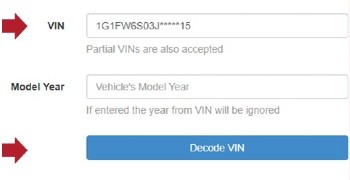Understanding your vehicle’s specifications and options can be crucial, whether you’re a car enthusiast, a potential buyer, or simply need to know more about your car for maintenance or repair. A Vehicle Identification Number (VIN) is a unique 17-character code assigned to every vehicle, and it holds a wealth of information. The National Highway Traffic Safety Administration (NHTSA) provides a free online VIN decoder that allows you to unlock some of this information, including details about where your vehicle was manufactured.
This guide will walk you through the simple steps to use the NHTSA VIN decoder to find vehicle information.
Decoding Your Vehicle’s Options: A Step-by-Step Guide
The NHTSA VIN decoder is a user-friendly tool available on their website. Here’s how to use it to access vehicle details:
Step 1: Access the NHTSA VIN Decoder
Navigate to the official NHTSA VIN decoder page: https://vpic.nhtsa.dot.gov/decoder/. This is your starting point to find key information about your vehicle directly from a trusted source.
Step 2: Enter Your VIN and Decode
Locate your vehicle’s VIN. It’s typically found on the driver’s side dashboard, inside the driver’s side doorjamb, or on your vehicle’s registration and insurance documents. Enter the complete 17-character VIN into the text box provided on the NHTSA decoder webpage. Then, click the “Decode VIN” button to initiate the process.
Step 3: Explore Vehicle Details
Once you click “Decode VIN,” the page will display the decoded information. Scroll down to the bottom of the results page to find the “Plant Information” field. This section reveals the specific plant where your vehicle was manufactured, including the city, state, and country.
This is just one piece of information you can obtain from your VIN using the NHTSA decoder. While the decoder is a valuable tool, remember that the information is reported by the manufacturer. For more in-depth details or questions about specific vehicle options, it’s always best to consult directly with the vehicle manufacturer or refer to the vehicle’s official documentation. Understanding your VIN is a great first step in discovering more about your vehicle’s background and specifications.
